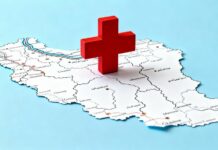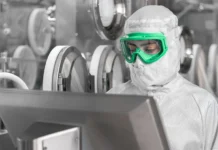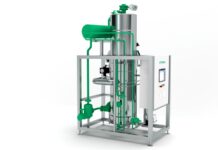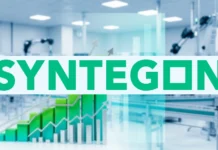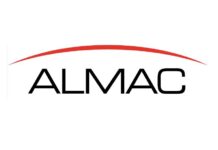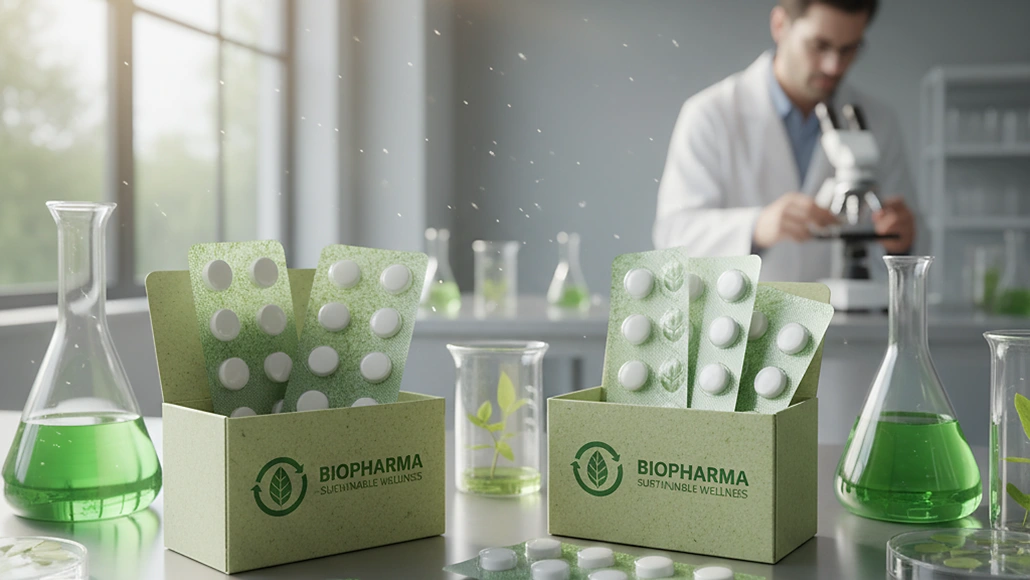Eco-Friendly Biodegradable Films Transforming Pharma Packaging
The pharmaceutical industry stands at the forefront of a packaging revolution, with biodegradable films in pharma packaging emerging as transformative solutions that address both environmental sustainability and product protection requirements. These innovative materials represent a fundamental shift from traditional petroleum-based packaging toward sustainable alternatives that maintain the rigorous safety and efficacy standards essential to pharmaceutical applications while significantly reducing environmental impact.
The Environmental Imperative Driving Sustainable Innovation
Global environmental pressures have intensified the pharmaceutical industry’s focus on sustainable packaging solutions, with an estimated 8 million tons of plastic entering oceans annually, much of which originates from packaging applications. The European Union’s Single-Use Plastics Directive and similar regulatory frameworks worldwide are creating unprecedented pressure for pharmaceutical companies to adopt biodegradable and compostable packaging materials that maintain product integrity while reducing ecological footprint.
The sustainable pharmaceutical packaging market has experienced remarkable growth, valued at approximately USD 105.8 billion in 2025 and projected to reach USD 372.19 billion by 2034, growing at a compound annual growth rate of 15 percent. This dramatic expansion reflects the industry’s recognition that environmental responsibility and pharmaceutical safety can coexist through innovative material science and packaging design.
Consumer awareness of environmental issues has reached unprecedented levels, with nearly 60 percent of global consumers considering sustainability a key purchasing factor according to recent market analysis. This consumer pressure, combined with regulatory mandates and corporate sustainability commitments, has created a compelling business case for pharmaceutical companies to invest in eco-friendly packaging solutions that align with modern environmental expectations.
Advanced Biopolymer Technologies Revolutionizing Material Science
Polylactic Acid has emerged as one of the most promising biodegradable materials in pharmaceutical packaging applications, derived from renewable resources such as corn or sugarcane. Recent innovations in PLA-based films have addressed historical limitations in barrier properties through the integration of additives such as nanocellulose and nanoclays, enabling these materials to provide enhanced moisture resistance and structural integrity without compromising biodegradability.
The development of multilayered PLA-based films represents a significant breakthrough in sustainable pharmaceutical packaging. These innovative structures combine PLA with other biodegradable polymers to create robust materials that offer improved barrier properties, increased heat resistance, and extended shelf life while maintaining complete compostability. This technological advancement enables pharmaceutical companies to protect sensitive medications effectively using fully sustainable packaging systems.
Polyhydroxyalkanoates have gained significant attention as biodegradable plastics produced through fermentation of plant sugars by microorganisms. PHA’s superior biodegradability, including breakdown in marine environments, makes it particularly attractive for pharmaceutical applications requiring environmental responsibility. Recent advances in industrial-scale PHA production have reduced costs while improving material properties, making these biopolymers increasingly viable for commercial pharmaceutical packaging applications.
Hybrid and Blended Materials Optimizing Performance Characteristics
The future of biodegradable pharmaceutical packaging lies in hybrid and blended materials that combine the best properties of different biodegradable polymers. These engineered materials can be tailored to provide specific benefits such as enhanced strength, improved moisture barriers, and superior thermal stability while maintaining complete biodegradability and compostability.
Blending PLA with starch-based polymers has produced films with superior mechanical properties that make them suitable for demanding pharmaceutical applications including blister packs and bottle labels. These hybrid materials demonstrate performance characteristics that match or exceed traditional plastic films while offering the environmental benefits of complete biodegradability under appropriate composting conditions.
Protein-based biodegradable films derived from sources such as whey, casein, and plant proteins offer unique properties that complement synthetic biodegradable polymers. These materials provide excellent barrier properties against gases while maintaining flexibility and processability required for pharmaceutical packaging applications. The integration of protein-based components into hybrid film structures creates opportunities for enhanced functionality and improved sustainability profiles.
Nanotechnology Integration Enhancing Barrier Properties
The incorporation of nanotechnology into biodegradable pharmaceutical packaging films has enabled significant improvements in barrier properties that were previously challenging to achieve with sustainable materials. Nanocellulose derived from wood, cotton, or agricultural waste provides reinforcement that improves mechanical strength and flexibility while enhancing moisture and gas barrier characteristics.
Nanoclays and metal oxide nanoparticles have been successfully integrated into biodegradable films to create micro-cavities that increase surface area for microbial attack, accelerating the biodegradation process while maintaining barrier properties during the product’s shelf life. These nanotechnology enhancements enable biodegradable films to meet the stringent requirements of pharmaceutical packaging while ensuring rapid environmental breakdown after disposal.
Smart release mechanisms enabled by nanotechnology integration allow biodegradable packaging films to provide controlled barrier properties that adapt to environmental conditions. These intelligent materials can maintain product protection during storage and distribution while accelerating biodegradation once disposed of in appropriate composting environments.
Regulatory Compliance and Quality Assurance in Sustainable Packaging
The transition to biodegradable pharmaceutical packaging requires comprehensive compliance with existing regulatory frameworks while meeting additional sustainability requirements. Regulatory bodies such as the FDA and European Medicines Agency have established guidelines for evaluating biodegradable packaging materials, focusing on material safety, product compatibility, and barrier performance throughout the product lifecycle.
Quality assurance protocols for biodegradable pharmaceutical packaging encompass traditional requirements such as moisture protection and chemical compatibility while incorporating new testing methodologies that evaluate biodegradation rates and environmental impact. These expanded testing requirements ensure that sustainable packaging materials meet both pharmaceutical safety standards and environmental performance expectations.
Stability testing of pharmaceuticals in biodegradable packaging requires extended evaluation periods that assess both product integrity and packaging performance over time. These studies must demonstrate that biodegradable materials maintain protective properties throughout the product’s shelf life while confirming that biodegradation occurs appropriately under composting conditions.
Manufacturing Process Innovations Enabling Commercial Viability
Advanced manufacturing processes have been developed to enable cost-effective production of biodegradable pharmaceutical packaging films at commercial scale. Blown film extrusion techniques optimized for biodegradable polymers ensure uniform thickness and consistent barrier properties while maintaining processing efficiency comparable to traditional plastic manufacturing.
Coating technologies enable the application of barrier layers and functional additives to biodegradable base films, creating sophisticated packaging materials with enhanced performance characteristics. These coating processes can incorporate antimicrobial agents, oxygen scavengers, and moisture barriers while maintaining the biodegradable nature of the overall packaging system.
Co-extrusion techniques allow for the production of multilayer biodegradable films with different functional layers that provide optimized performance for specific pharmaceutical applications. These manufacturing innovations enable the creation of sophisticated packaging structures that meet diverse pharmaceutical requirements while maintaining environmental sustainability.
Supply Chain Integration and Scalability Considerations
The successful implementation of biodegradable pharmaceutical packaging requires comprehensive supply chain modifications that address material sourcing, processing, and disposal infrastructure. Pharmaceutical companies must develop relationships with suppliers capable of providing consistent quantities of high-quality biodegradable materials that meet stringent pharmaceutical specifications.
Distribution network modifications may be necessary to accommodate the specific handling requirements of biodegradable packaging materials, including temperature and humidity controls that ensure material integrity during transportation and storage. These supply chain adaptations require careful coordination between pharmaceutical manufacturers, packaging suppliers, and distribution partners.
End-of-life management for biodegradable pharmaceutical packaging requires infrastructure development that supports appropriate composting and disposal processes. Pharmaceutical companies are increasingly partnering with waste management organizations to create circular economy systems that maximize the environmental benefits of biodegradable packaging materials.
Economic Analysis and Market Adoption Trends
The economic viability of biodegradable pharmaceutical packaging has improved significantly as material costs decrease and production volumes increase. While initial material costs may exceed traditional plastics, the total cost of ownership including regulatory compliance, brand value enhancement, and waste management often favors biodegradable alternatives.
Market adoption trends indicate increasing acceptance of biodegradable packaging among pharmaceutical companies, with major manufacturers implementing sustainability commitments that require transition to renewable and biodegradable packaging materials. These corporate commitments create market demand that drives continued innovation and cost reduction in sustainable packaging technologies.
Consumer willingness to pay premium prices for environmentally responsible pharmaceutical products supports the economic case for biodegradable packaging adoption. Market research indicates that environmental considerations increasingly influence purchasing decisions, particularly among younger demographic groups who prioritize sustainability in healthcare choices.
Future Innovations and Emerging Technologies
The future of biodegradable pharmaceutical packaging will be shaped by continued advances in material science, processing technology, and sustainable design principles. Research into new biodegradable polymers derived from agricultural waste and marine organisms offers potential for even more sustainable packaging solutions with enhanced performance characteristics.
Biotechnology applications in packaging development include the use of genetic engineering to optimize microorganisms for producing biodegradable polymers with specific properties tailored to pharmaceutical applications. These biotechnological advances could enable the creation of custom biodegradable materials that meet precise pharmaceutical requirements while maximizing environmental benefits.
Integration with circular economy principles will drive the development of packaging systems that can be regenerated or upcycled rather than simply composted. These advanced sustainability concepts could revolutionize pharmaceutical packaging by creating closed-loop systems that eliminate waste while maintaining product protection and safety.
Conclusion: Pioneering Sustainable Pharmaceutical Excellence
The transformation of pharmaceutical packaging through biodegradable films represents a fundamental evolution in how the industry approaches environmental responsibility while maintaining uncompromising safety and efficacy standards. As biodegradable materials continue to advance in performance and cost-effectiveness, pharmaceutical companies that embrace these innovations position themselves as leaders in sustainable healthcare delivery.
The successful integration of eco-friendly packaging materials requires collaboration across the entire pharmaceutical value chain, from material scientists and packaging engineers to regulatory specialists and supply chain managers. Through this collaborative approach, the industry can achieve the dual objectives of protecting patient health and environmental well-being, creating a sustainable foundation for future pharmaceutical innovation and distribution.




